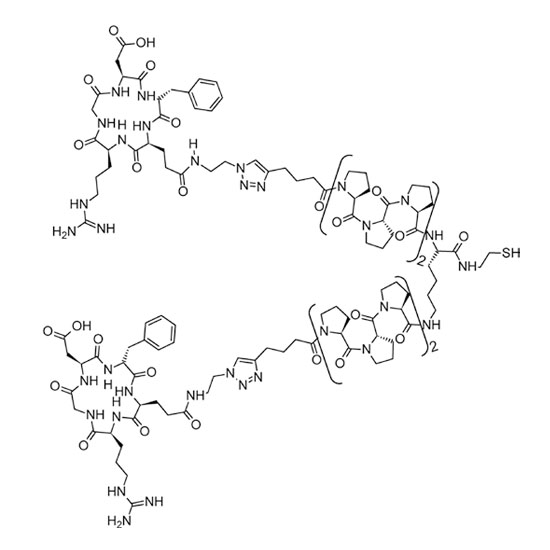Focal adhesion stabilization by enhanced integrin-cRGD binding affinity
23-Feb-2017
BioNanoMat 2017; 18(1-2): 20160014, DOI: https://doi.org/10.1515/bnm-2016-0014
BioNanoMat 2017, online aticle
In this study we investigate the impact of ligand presentation by various molecular spacers on integrin-based focal adhesion formation. Gold nanoparticles (AuNPs) arranged in hexagonal patterns were biofunctionalized with the same ligand head group, cyclic Arg-Gly-Asp [c(-RGDfX-)], but with different molecular spacers, each of which couples the head group to the gold. Aminohexanoic acid, polyethylene glycol (PEG) and polyproline spacers were used to vary the distance between the binding motif and the substrate, and thus the presentation of integrin binding on anchoring points. Adherent cells plated on nanopatterned surfaces with polyproline spacers for peptide immobilization could tolerate larger ligand spacing (162 nm) for focal adhesion formation, in comparison to cells on surfaces with PEG (110 nm) or aminohexanoic acid (62 nm) spacers. Due to the rigidity of the polyproline spacer, enhanced access to the ligand-binding site upon integrin-cRGD complex formation increases the probability of rebinding and decreases unbinding, as measured by fluorescence recovery after photobleaching (FRAP) analysis, compared to the analogues with aminohexanoic acid or PEG-containing spacers. These findings indicate that focal adhesion formation may not only be stabilized upon tight integrin clustering, but also by tuning the efficiency of the exposure of the cRGD-based ligand to the integrin extracellular domains. Our studies clearly highlight the importance of ligand spatial presentation for regulating adhesion-dependent cell behavior, and provide a sound approach for studying cell signaling processes on nanometer-scale, engineered bioactive surfaces under chemical stimuli of varying intensities.











